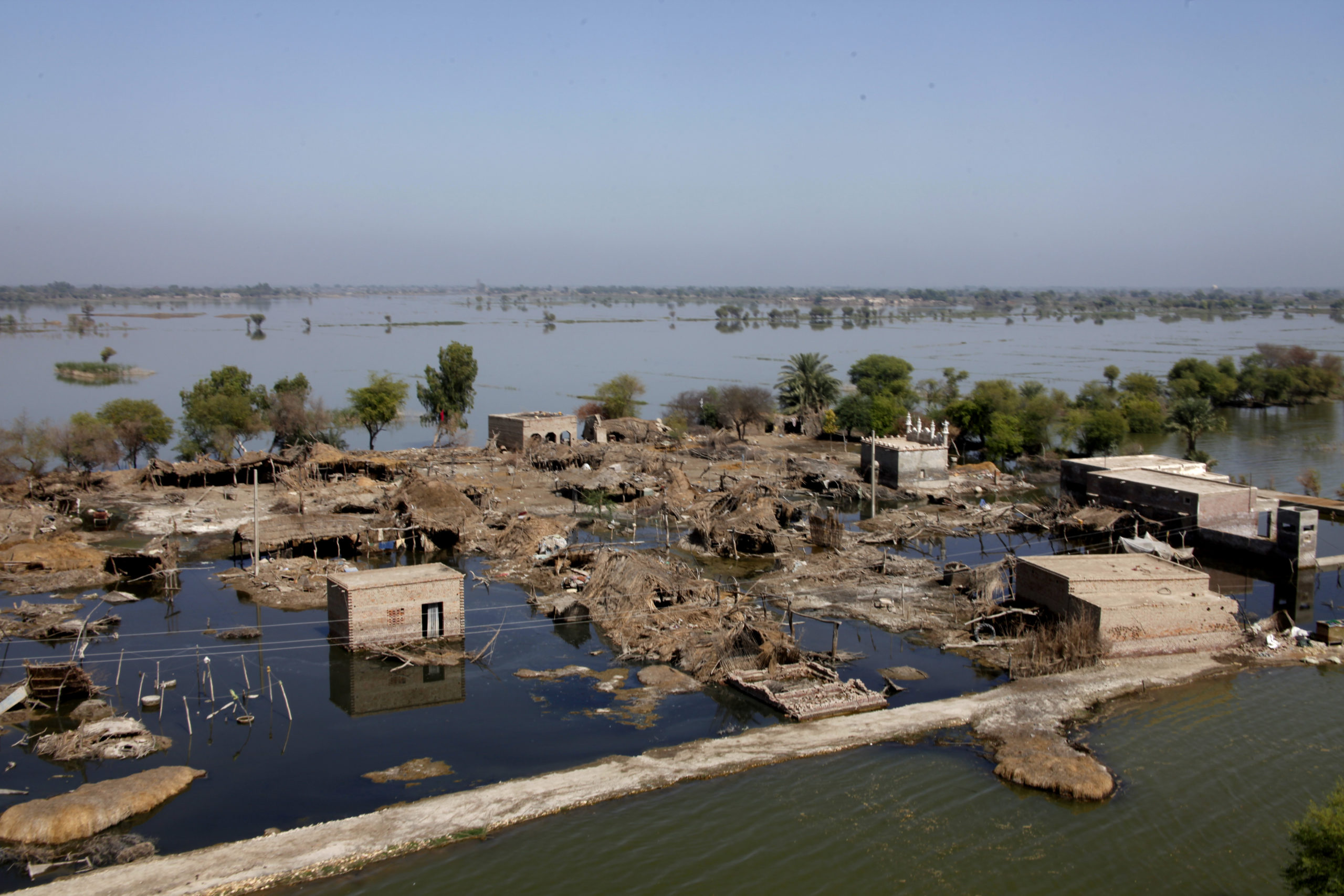Pakistan has received unprecedented amounts of flooding throughout this year, in part due to a record-breaking monsoon season — usually beginning around mid-July and August — which is still ongoing.
Southern regions of Pakistan, and especially the province of Sindh, are underwater, resulting in the destruction of approximately 45 percent of the country’s cropland and affecting at least 33 million of the country’s population, as announced by Pakistan’s Minister of Climate Change, Sherry Rehman, for CNN last month. Rehman calls it “the worst humanitarian disaster of this decade.”
A representative from York University’s Pakistani Student Association (PSA) points out that “one third of Pakistan is underwater and nearly 1400 people have lost their lives. More than 700,000 livestock have died across Pakistan, of which approximately 500,000 are in the Balochistan province where livestock is a critical source of sustenance and livelihood for many families.”
Professor Usman T. Khan, an associate professor of civil engineering at Lassonde School of Engineering whose research entails flood risk assessment, urban hydrology, water resource management and infrastructure, and the impacts of climate change on these systems points out the serious impact that such flooding has had on the country’s infrastructure and surrounding ecosystems.
“Pakistan has many cities and (regulated and unregulated) developed areas that are built next to the Indus River (and its tributaries). The area next to the river, known as a flood plain, is likely to flood on an annual basis. Future development and re-development around the river should follow the principles of ‘making room for the river’, such as restoring the river’s natural flood plain and allowing some areas to safely flood when necessary, whilst protecting sensitive developed areas,” says Khan.
Khan also shares thoughts on possible ways the country can avoid future natural events of this magnitude.
“Generally speaking, the factors that contributed to this flood event — a heat wave followed by monsoon rain — really are unprecedented. The amount of rainfall is estimated to be three to five times higher than normal. From an engineering perspective, it’s difficult to build infrastructure to protect against such (a historically) low probability event. However, when rebuilding flood and drainage infrastructure, more recent data and climate change simulations of future precipitation may be used to design the infrastructure. Other steps include building a robust, real-time flood early warning system.
“Pakistan has a large number of people living in flood zones: this means up-to-date flood hazard and risk maps are necessary. These maps can inform us of where flood risk is higher and who (i.e. population demographics) is at risk and, can inform disaster management during flood events,” Khan continues.
As Canada faces its own environmental concerns, Pakistan’s unprecedented flooding is a reminder of growing concerns around the climate crisis itself and climate change knowledge. “It highlights that previous assumptions on climate normals may not be suitable, and future planning should consider these compound risks when developing and designing infrastructure,” Khan adds.
The country’s flooding has been a result of what Khan calls “an example of compound risk. Two extreme climate events happened back-to-back: first the heatwave earlier in the spring, which caused higher and earlier glacial melt, followed by the intense monsoon rainfalls.”
Many York University students have been affected by the events in Pakistan, with many having family and relatives residing in heavily-affected areas.
The PSA is currently holding a fundraiser with a goal of raising $5000 and is currently planning a fundraiser scheduled to take place in November. They have also partnered with the PSA at Brock University and a local Pakistani organization called Hamdard Haath.
Muslim Students’ Association at York (MSA) is partnering with Islamic Relief Canada to send aid.
“Charity is the third pillar of Islam. There is a form of Sadaqah in Islam called Sadaqah Jariyah, which is the ‘eternal charity’, the type which has long lasting effects such as building wells, schools, and hospitals,” adds a representative from MSA.
This August, Canada pledged a total of $33 million in aid towards relief efforts such as the Islamic Relief Canada and Action Against Hunger Canada.
To donate or learn how you can get involved, check out the PSA’s Instagram @psayorku and the Islamic Relief Canada website.


